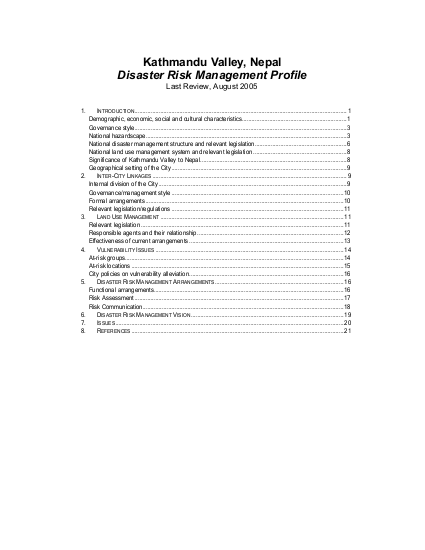
Landlocked between China and India, Nepal is rectangular-shaped with a total area of 147,181 square kilometers. The country is home to eight of world's 10 highest peaks, including Sagarmatha or Mount Everest and a population of 24,797,7059 (Central Beaureau of Statistics-Nepal) with a growth rate of 2.25% (2004 estimate). Geographically, the country is divided into three regions: Mountain, Hills and Tarai (plains area), and administratively, is divided into five development regions: eastern, central, western, mid-western and far western. The Tarai, known as the "grain basket" of Nepal because nearly 40% of the area is actively farmed, is a low, flat, fertile region stretching east-west along the Indian Border covering 23% of the total area of Nepal. Nearly half of Nepal’s total population - 47% - live in this region. The remaining bulk of Nepal’s population - 45% - live in the Hilly region, so named because the area varies between 610 meters to 4,877 meters above the sea level. The Hilly region covers 43% of the country of which only 10% is actively farmed.
Resource collections
- UN Habitat - Urban Response Collection
- Urban Response - Urban Crisis Preparedness and Risk Reduction
- Urban Response Collection - Community Engagement and Social Cohesion
- Urban Response Collection - Economic Recovery
- Urban Response Collection - Environment and Climate Change
- Urban Response Collection - Housing, Land and Property
- Urban Response Collection - Urban Crisis Response, Recovery and Reconstruction
- Urban Response Collection - Urban Resilience